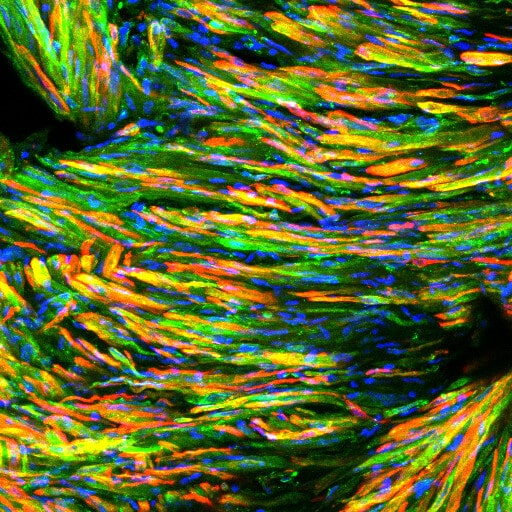The conventional treatments for diabetes and insulin resistance are based on the consumption of drugs by injection and ingestion and provide a partial and short-term solution. This is the background for trying to develop long-term systemic solutions, and this is where the new development comes in

A technology developed at the Technion and published in the journal Science Advances Improved glucose uptake in diabetic mice. The development was led Prof. Shulamit Levenberg and PhD student Rita Beckerman from the Faculty of Biomedical Engineering. Their colleagues from the Rappaport Faculty of Medicine at the Technion and Toronto, New York and Ben Gurion University participated in the study.
Glucose is an essential resource in the life of mammals, as it provides energy to the cell. Its absorption in the cell is dependent on the interaction between GLUT4 (the glucose carrier) and the hormone insulin, which binds to the front of the cell and allows glucose to enter through GLUT4.
This essential process goes wrong in patients with type 2 diabetes (T2D) and this is due insulin resistance - Disturbance in the function of insulin and the absorption of glucose in the body. Such a situation causes the blood sugar to rise, harms the patient's quality of life and may lead to many physiological disorders including narrowing of blood vessels, high blood pressure, arteriosclerosis and erosion in the activity of the pancreatic islets.
The conventional treatments for diabetes and insulin resistance are based on the consumption of drugs by injection and ingestion and provide a partial and short-term solution. This is the background for trying to develop long-term systemic solutions, and this is where the new development of the Technion researchers comes in.
Rita Beckerman and Prof. Shulamit Levenberg raised Engineered muscle tissue characterized by overexpression of GLUT4 (glucose carrier) and tested it in overweight or insulin-resistant diabetic mice. The transplantation improved the mice's functions and the improvement was maintained for many months. Even when "sugar loading" was performed, i.e. excessive consumption of glucose, the treated mice coped well with it. According to Prof. Levenberg, "We showed that this technology makes it possible to restore insulin sensitivity and lower the blood glucose level in diabetic mice."
PhD student Rita Beckerman
The research was conducted on skeletal muscle tissues - tissues that are very important in the functioning of the body, for example in the movement of the skeleton and its stability. Skeletal muscle plays a central role in handling glucose and is also the main consumer of glucose in the body. The creation of the engineered skeletal muscle tissues at the Technion is based on a growing method that Prof. Levenberg's research group has been developing for many years - growing the tissue on XNUMXD scaffolds with the help of cells that accelerate its growth. This method improves the absorption of the tissue in the target organ. Since the engineered tissues are based on cells taken from the patient, they are not rejected by him when they are implanted in his body.
According to Prof. Levenberg, "Our engineered tissues had a systemic effect, meaning they improved the mice's function not only in the direct context of glucose absorption, but also in the context of known complications of diabetes, including fatty liver. We hope that in the future we will be able to show that the technology we developed is also relevant for the treatment of people with type 2 diabetes."
The research was conducted with the support of the Rina and Avner Schneur Center for Diabetes Research at the Technion, led by Prof. Levenberg, the Linda Rose Diamond Foundation for Diabetes Research and the National Cancer Institute in the United States.
Article in the journal Science Advances click here
